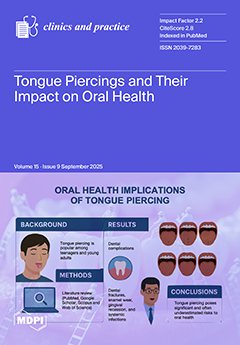Background: Metabolic syndrome (MS) and obstructive sleep apnea (OSA) frequently coexist, exacerbating systemic inflammation, oxidative stress, and metabolic dysregulation. This study evaluates the effects of dietary and probiotic interventions, compared to a non-intervention control group, on metabolic, hemodynamic, and neurochemical parameters, with a specific focus on the neurotransmitters GABA and glutamate.
Methods: In a prospective randomized study (2020–2023), 120 patients with coexisting MS and OSA were assigned to three groups: control (
n = 36), diet therapy (
n = 42), and diet therapy combined with probiotics (
n = 42). Interventions lasted six months and included personalized dietary plans and probiotic supplementation. Outcome measures included BMI, visceral fat, HOMA index, lipid profile, oxygen saturation, and urinary GABA and glutamate levels. Unsupervised K-means clustering and principal component analysis (PCA) were applied to identify phenotypic response patterns based on delta values.
Results: Diet therapy led to significant reductions in BMI (−15.7%,
p = 0.001), visceral fat (−17.3%,
p = 0.001), triglycerides (−14.6%,
p = 0.003), uric acid (−9.5%,
p = 0.011), and C-reactive protein (CRP) (−21.4%,
p = 0.007). The combined intervention group exhibited further improvements in visceral fat (−22.8%,
p = 0.001), glutamate (−18.2%,
p = 0.002), and GABA levels (+19.5%,
p = 0.001). Oxygen saturation improved across all groups, with the greatest increase in the probiotics group (+2.3%). Clustering analysis revealed three distinct response phenotypes—strong, moderate, and non-responders—highlighting inter-individual variability in treatment efficacy.
Conclusions: Personalized dietary interventions, especially when paired with probiotics, effectively improve metabolic, inflammatory, and neurochemical profiles in patients with MS and OSA. Integrating clustering algorithms enables phenotype-specific stratification, offering a step toward precision lifestyle medicine. Future studies should explore long-term outcomes and refine microbiota-targeted approaches to optimize intervention efficacy.
Full article






